By Coty Honeysuckle and Travis Beckerdite
How to turn y= A(x-h)2+K into 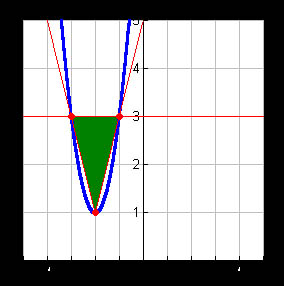
How to turn y= A(x-h)2+K into 
If you follow these 8 simple steps, you too can find the Area of a Quadratic!
Before you do anything, you have to have TI-Interactive. Assuming you know what you're doing in TII, you will need to set up some slide bars. You will need approximately 4 of them; you will need one for A, H, K, and M (slope). After you set up the slide bars, you will need to put in the value's for each. Our equation is y=2(x-1)2+2, and (A=2, H=1, K=2, and M=2. Here is what it should look like up to this point:
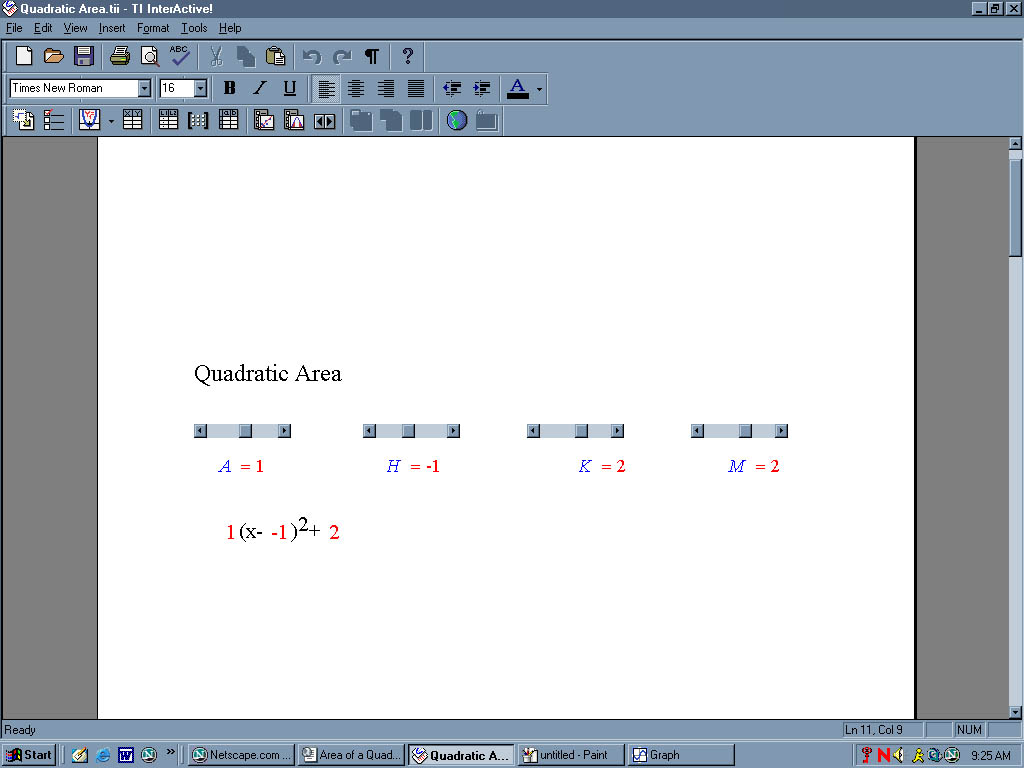
After you put all of these values in the slide bars, form
a graph. Inside the graph, you will do the following:
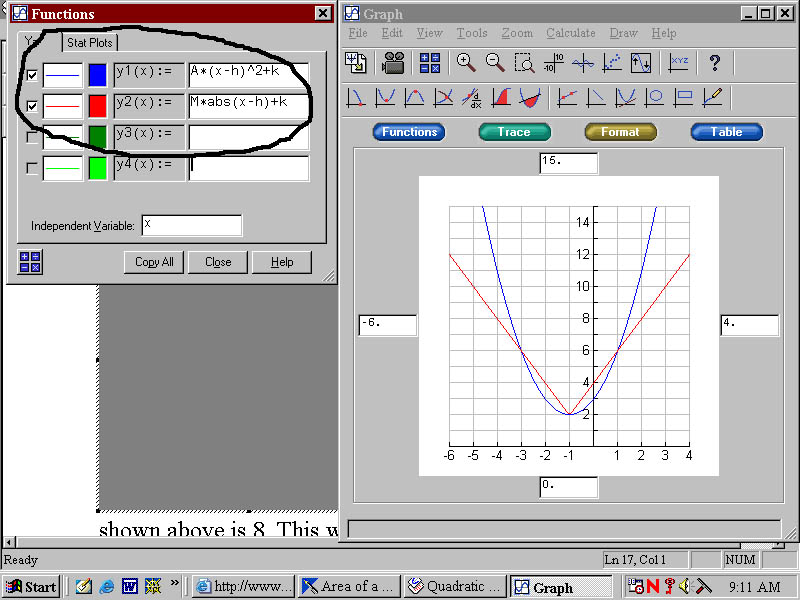
After you do these things, save this to the document, and go back to the original page. When you are back in the original page, you will need to create a few text boxes. Here is what will be in those text boxes, and what they look like:
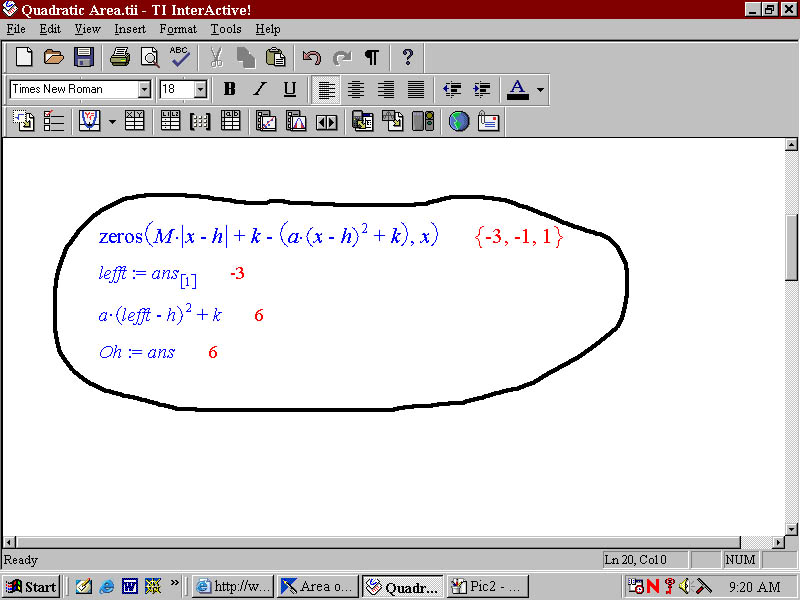
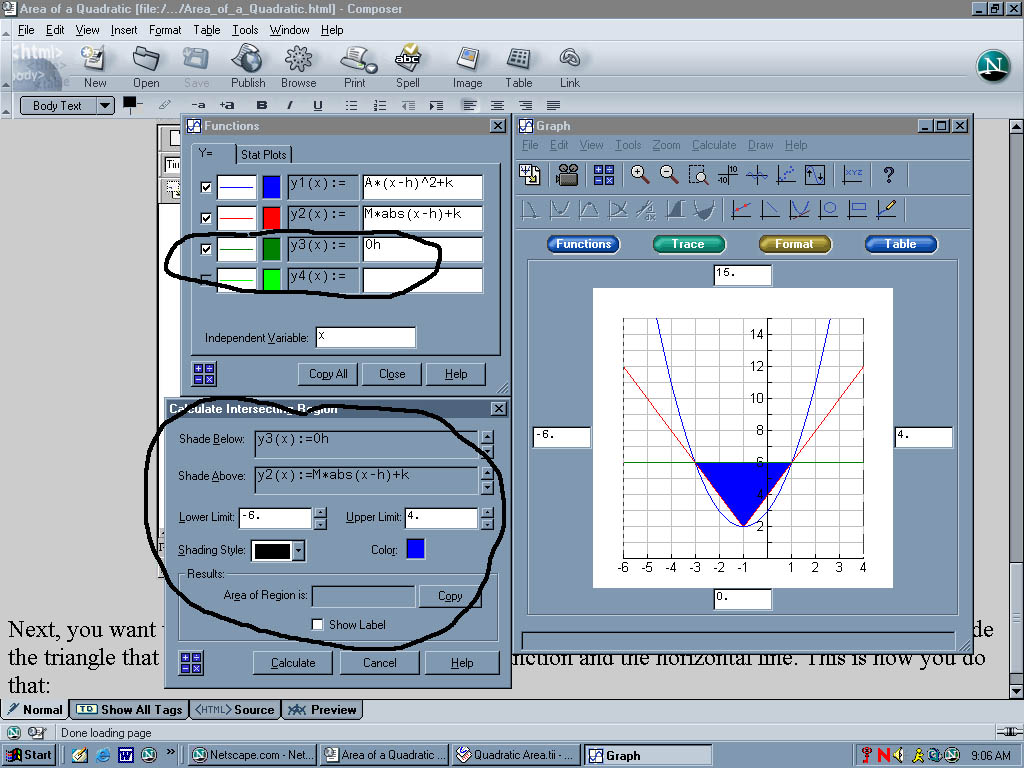
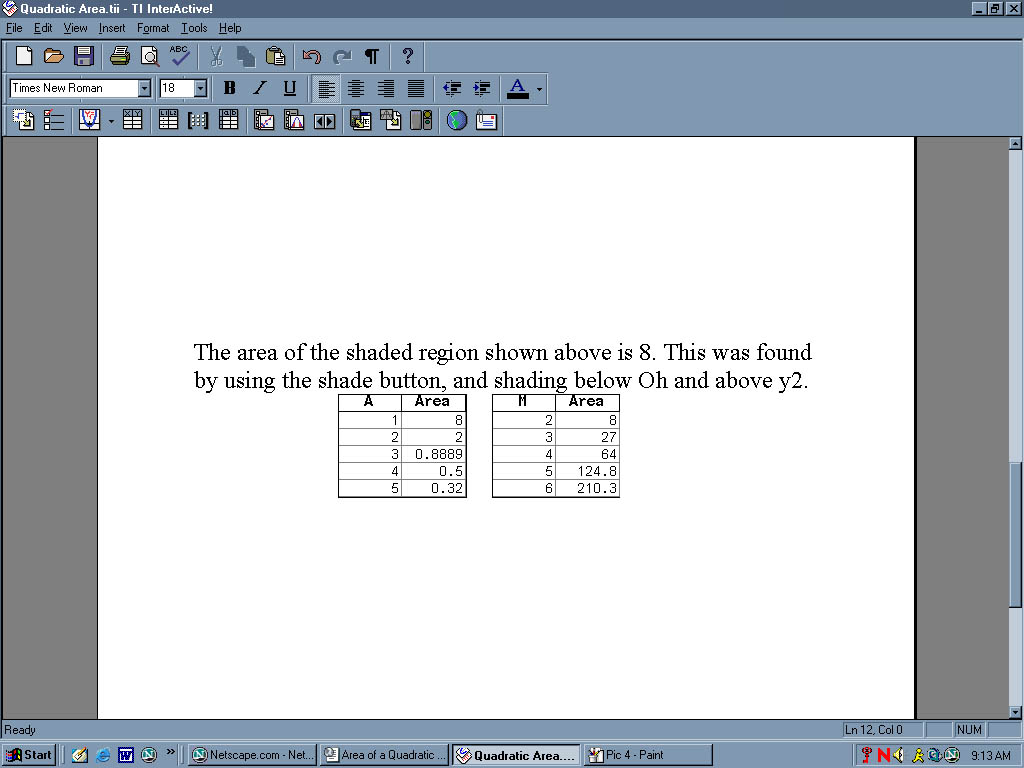
 .
.